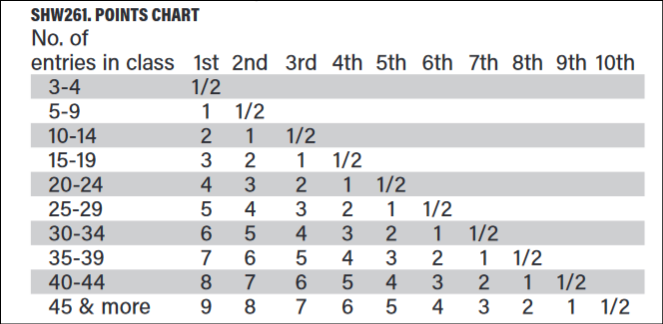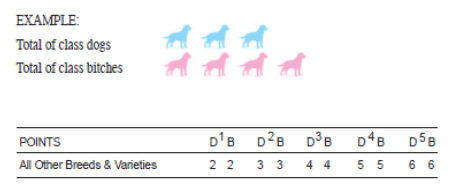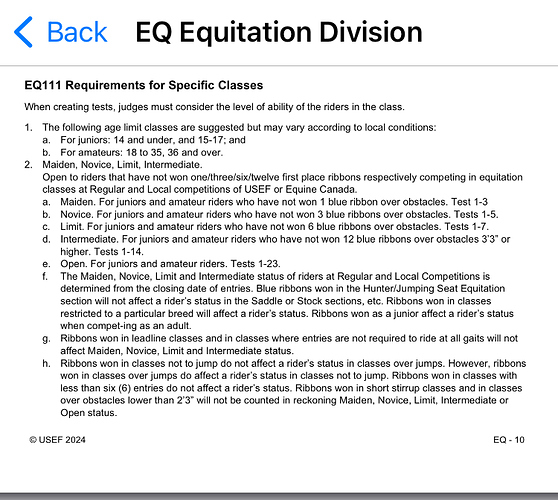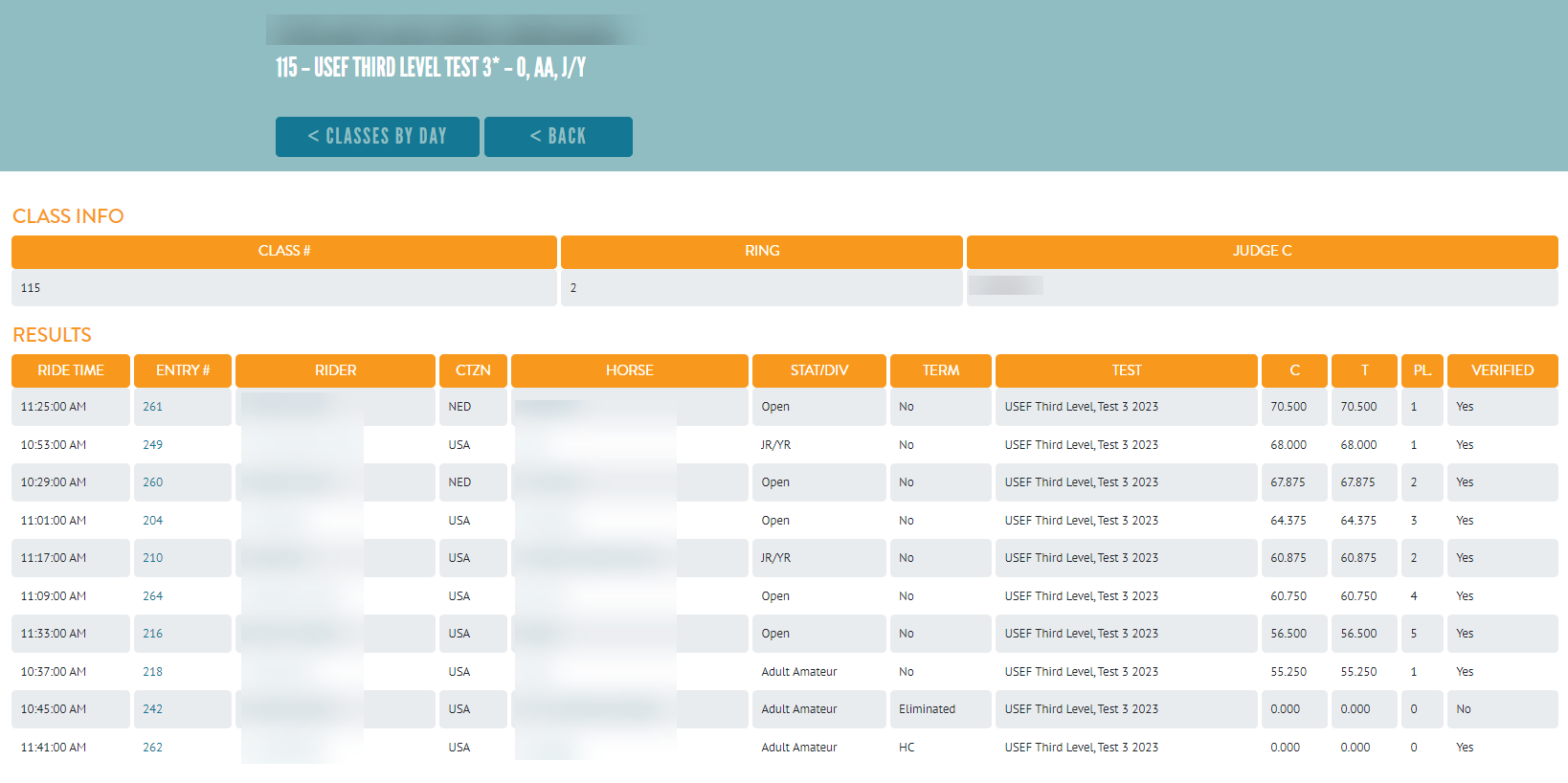It was an exceptionally kind moment. He had a good-looking chestnut baby green of some sort who was definitely acting more sensibly than the 13-year-old I was sitting on. He was in conversation with somebody else and certainly didn’t have to look up and encourage a random kid he’d never met. It was a very bad horse show all around, but that was my ribbon for the week.
I don’t know why but it seemed more wrong to have Olympians on HS teams than an open event. Probably bc I was unfamiliar with HS sports.
For a lot of sports, you’re “too old” for the Olympics or top of the sport by the time you hit mid-20s. A lot of athletes that go are teenagers or college aged. Equestrian is one of a handful that has “older” athletes - enough that the average age of athletes in the Olympics tanks when you take it out of the factoring.
It certainly sounds weird though! We are used to having such an age range of people at the top of the game that we don’t realize how unique that is.
Ditto for having men and women compete against each other.
Yeah. And basically my entire sport experience was equestrian.
OTOH it was a bit daunting, but seemed reasonable, to once share a dressage warmup ring with 4 of the 5 people (including alternate) that had been on the last olympic team.
they use to have classes that could be based on number of blue ribbons a rider has won
I cannot remember the names I think novice and limit were two of the classifications. Some of the older hunter folks might remember the old AHSA rules
Maiden - no blues
Novice - up to two blues (less than 3)
Limit - up to five blues (less than 6)
Yes, could not remember the bottom but did remember 3 and 6
For jumpers at least I think it should be based on # of clear rounds at the height instead of blue ribbons. Blue ribbons don’t necessarily indicate success if you are the only one in the class. It’d be a harder to have an objective measure in the hunters but maybe # of blue ribbons with at least 3 (or some other number in the class)?
Or maybe create a point system like most stock horse registries have. Points based on the number of entries.

I think the maiden novice limit system certainly had its limitations. If you are trying to stratify for experience, there are some who will live in the the maiden and novice division for many years.
The maiden/novice/limit/intermediate equitation classes are still in the USEF Rulebook, but I don’t remember the last time I saw them offered at a show. I do see open age group equitation offered pretty regularly.
NJ is like this too, especially at certain shows - you might show up and find Anne K or Boyd Martin in your 1.10 or 1.20m class. One summer I kept seeing Laura Chapot on the same couple of young horses in the 1m and eventually someone told me they were Gem Twist clone babies.
And not just on one horse. I think Boyd Martin will often throw half a dozen or more on the truck and take them to get some miles in the jumper ring at any show within driving distance. New Jersey, Saugerties, wherever.
I am very far behind but @Dags, you are right. Some dressage shows are organized so that all entries at say, First Level Test 3, all ride in the same class, same day, same ring, same judge. And they all ride in the same timeframe - individually of course, but only riders doing that specific test (First Level Test 3) are in that timeframe/class. All the riders are scored with the same methodology, using the score sheet for First Level Test 3, with the same scoring criteria, same coefficients for the same movements, etc. Placing/ribbons are awarded by division after scores for the entire class have been calculated. Here is an example of a results list for a particular First Level Test 3 class a few months back. I don’t know what the ride order was for this class but usually the rides are intermingled - for instance, a pro may have the first ride time, followed by a couple of amateurs, then a junior, another pro, then another amateur, a junior, two amateurs, another pro, maybe the first pro on another horse, another junior, and so on.
in dressage you’re only really competing against yourself.
Ideally, yes. But the fact that ribbons are awarded accorded to placings makes that concept a pipe dream - everyone wants to show their family and friends and the horse’s owner a blue ribbon. And FWIW - from time to time, there are discussions in the dressage forum and elsewhere about changing the current award system to the Danish/Swedish system. So instead of Blue for 1st place, Red for 2nd place, etc., ribbons are awarded based on scores. I don’t remember the exact breakdown but it is something like 67% and above gets Blue, 63%-67% gets Red, 60% - 63% gets yellow, etc. I don’t think that change will ever happen on a large scale, but there are some small schooling shows here and there that already use that system.
Or maybe create a point system like most stock horse registries have. Points based on the number of entries.
That is similar to AKC conformation dog shows, where points are awarded based on the number of entries in regular classes for that breed or variety (IIRC, non-regular classes include Veteran and Best of Breed). This is an example of a point schedule (from the AKC web site).

Number of points awarded vary by location/region - in general, a large and prestigious show in a well-populated area will require more entries, say 3 points might require 8 dogs and 6 bitches, whereas a smaller show in a more rural area may only require the numbers shown in the example (3 dogs = 2 points, 4 bitches = 3 points).
AKC Championship designation requires a total of 15 points, including at least two “majors” (major wins require 3 points or higher). There are also requirements regarding wins under different judges.
There are classes for puppies (6-under 9 mos, 9- under 12 mos), young dogs (12- under 18 mos), Amateur Owner Handler, Bred by Exhibitor, American Bred, and Open, and the only class where amateur handlers and pro handlers do not compete against each other is Amateur Owner Handler. The Open classes are usually the largest, and usually (but not always) where the Winners Dog and Winners Bitch come from (all classes except BoB are separated by sex). And while pro handlers very frequently take home the honors, there are many instances were an amateur handler (usually a breeder) gets the nod.
I don’t know how or if a similar methodology could be applied to hunter shows, but it certainly seems that USHJA and USEF need to put more thought into this issue. The recent “presidential modification” to the amateur rule seems stupid and won’t do anything other than allow budding professionals to compete as amateurs. It sounds as though it doesn’t really solve any problem other than to quiet the grousing of some professionals because they have to compete against other pros. 
In the screen shot you can figure out the order based on the start times and it looks like it went open, ammy, junior.
That isn’t true. An amateur rode last. The rides are not grouped like that.
In the screen shot you can figure out the order based on the start times and it looks like it went open, ammy, junior.
I went back and looked at the ride order and it went like this:
10:29 - Open
10:37 - AA
10:45 - AA
10:53 - JR/YR
11:01 - Open
11:09 - Open
11:17 - JR/YR
11:25 - Open
11:33 - Open
11:41 - AA
I will also add a clarification to my earlier comments - I kept referring to riders in the Open class as “pros” but that is not necessarily the case. Open means open to all, so there may in fact be AAs or even JR/YRs riding in the class - although I think many riders tend to stick to the divisions they are eligible for.
And I am still not sure if this type of structure could be applied to hunter shows. It could be that it would cause even more chaos in warm-up rings, with Nervous Nellie the timid 63 y/o AA jostling for space with Serious Sadie the talented and assertive junior riding a six-figure horse, and Patty Pro the long-time professional trainer bringing along a young horse.


